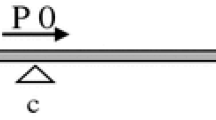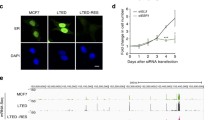Abstract
Approximately two thirds of breast cancer patients have estrogen-dependent carcinomas. The biosynthesis of estrogens is catalyzed by the microsomal enzyme aromatase. Mechanisms controlling human aromatase gene expression are complicated by the existence of multiple tissue specific promoters. The most proximally located PII promoter is mainly active in ovarian granulosa cells. PII can be switched on in human breast cancer cells. Since there are strong silencer elements located within the 3′ portion of the PII promoter, we propose that the function of these silencer elements could be reversed by breast cancer cell specific signals/factors, resulting in aberrant expression of aromatase. We have identified and characterized a novel silencer element, S2, which is upstream of S1, a silencer element recently identified by another group. S2, a 54-bp fragment 100% conserved between humans and rodents, functions in both orientation- and promoter-independent manners. The core region of S2 contains two consensus binding sites for members of the GATA transcription factors. GATA-4 was found to be expressed in three out of four human breast cancer cell lines examined by RT-PCR, and transfection with GATA-4 partially reversed the repressive function of S2. However, we were unable to demonstrate that DNA-protein complexes formed between nuclear extracts of human breast and ovarian cancer cells and S2 contain GATA-4 using a supershifting approach. We suggest that the expression of GATA-4, and more importantly, other yet to be identified GATA or GATA-related factor(s), are implicated in provoking aberrant expression of aromatase, and therefore, the biosynthesis of estrogens, in human breast cancer cells.
Similar content being viewed by others
References
Nass SJ, Hahm HA, Davidson NE: Breast cancer biology blossoms in the clinic. Nat Med 4: 761–762, 1998
Simpson ER, Mahendroo MS, Means GD, Kilgore MW, Hinshelwood MM, Graham-Lorence SG, Amarneh B, Ito Y, Fisher GR, Michael MD, Mendelson CR, Bulun SE: Aromatase cytochrome P450, the enzyme responsible for estrogen biosynthesis. Endocrine Rev 15: 342–355, 1994
Corbin CJ, Graham-Lorence S, McPhaul M, Mason JI, Mendelson CR, Simpson ER: Isolation of a full length cDNA insert encoding human aromatase system cytochrome P-450 and its expression in non-steroidogenic cells. Proc Natl Acad Sci USA, 85: 8948–8952, 1988
Harada N: Cloning of a comparative cDNA encoding human aromatase: immunochemical identification and sequence analysis. Biochem Biophys Res Commun 156: 725–732, 1988
Means, GD, Kilgore MW, Mahendroo MS, Mendelson CR, Simpson ER: Tissue-specific promoters regulate aromatase cytochrome P450 gene expression in human ovary and fetal tissues. Mol Endocrinol 5: 2005–2013, 1991
Kilgore MW, Means GD, Mendelson CR, Simpson ER: Alternative promotion of aromatase P-450 expression in the human fetal tissue. Mol Cell Endocrinol 83: R9–R16, 1992
Zhao Y, Nichols JE, Bulum SE, Mendelson CR, Simpson ER: Aromatase P450 gene expression in human adipose tissue. Role of a Jak/STAT in regulation of the adipose-specific promoter. J Biol Chem 270: 16449–16457, 1995
Esteban JM, Warsi Z, Haniu M, Hall P, Shively JE, Chen S: Detection of intratumoral aromatase in breast carcinomas. An immunohistochemical study with clinicopathologic correlation. Am J Pathol 140: 337–343, 1992
Koos RD, Banks PK, Inkster SE, Yue W, Brodie AM: Detection of aromatase and keratinocyte growth factor expression in breast tumors using reverse transcription-polymerase chain reaction. J Steroid Biochem Mol Biol 45: 217–225, 1993
Zhou C, Zhou D, Esteban J, Murai J, Sitteri PI, Wilczynski A, Chen S: Aromatase gene expression and its exon I usage in human breast tumors. Detection of aromatase messenger RNA by reverse transcription-polymerase chain reaction (RT-PCR). J Steroid Biochem Mol Biol 59: 163–171, 1996
Zhou D, Clarke P, Wang J, Chen S: Identification of a promoter that controls aromatase expression in human breast cancer and adipose stromal cells. J Biol Chem 271, 15194–15202, 1996
Yue W, Wang JP, Hamilton CJ, Demers LM, Santen RJ: In situ aromatization enhances breast tumor estradiol levels and cellular proliferation. Cancer Res 58: 927–932, 1998
Wang J, Chen S: Identification of a promoter and a silencer at the 3′-end of the first intron of the human aromatase gene. Mol Endocrinol 6: 1479–1488, 1992
Zhou D, Chen S: Characterization of a silencer element in the human aromatase gene. Archives Biochem Biophys 315: 213–220, 1998
Yang C, Zhou D, Chen S:Modulation of aromatase expression in the breast tissue by ERRa-1 orphan receptor. Cancer Res 58: 5695–5700, 1998
Jin T, Branch DR, Zhang X, Qi S, Youngson B, Goss PE: Examination of POU homeobox gene expression in human breast cancer cells. Int J Cancer 81: 104–112, 1999
Jin T, Drucker DJ: Activation of proglucagon gene transcription through a novel G1 promoter element by the caudalrelated homeodomain protein cdx-2/3. Mol Cell Biol 16: 19–28, 1996
Mills GB, May C, Hill M, Campbell S, Shaw P, Marks A: Ascitic fluid from human ovarian cancer patients contains growth factors necessary for intraperitoneal growth of human ovarian adenocarcinoma cells. J Clin Invest 86: 851–585, 1990
Arceci RJ, King AAJ, Simon MC, Orkin SH, Wilson DB: Mouse GATA-4: a retinoic acid-inducible GATA-binding transcription factor expressed in endodermally derived tissues and heart. Mol Cell Biol 13: 2235–2246, 1993
Jin T, Drucker DJ: The proglucagon gene upstream enhancer (GUE) contains positive and negative domains important for tissue-specific proglucagon gene transcription. Mol Endocrinol 9: 1306–1320, 1995
Schreiber E, Matthias P, Muller MM, Schaffner W: Rapid detection of octamer binding proteins with ‘mini-extracts’ prepared from a small number of cells. Nucleic Acids Res 17: 6419, 1989
Hickey GJ, Krasnow JF, Beattie WG, Richards JS: Aromatase cytochrome P450 in rat ovarian granulosa cells before and after luteinization: adenosine 3′,5′-monophosphate-dependent and independent regulation. Cloning and sequencing of rat aromatase cDNA and 5′ genomic DNA. Mol Endocrinol 4: 3–12, 1990
Fitzpatrick SL, Richards JS: Cis-acting elements of the rat aromatase promoter required for cyclic adenosine 3′,5′-monophosphate induction in ovarian granulosa cells and constitutive expression in R2C leydig cells. Mol Endocrinol 7: 341–354, 1993
Gonzalez-Robayna IJ, Alliston TN, Buse P, Firestone GL, Richards JS: Functional and sub-cellular changes in the Akinase-signalingpathway: relation to aromatase and Sgk expression during the transition of granulosa cells to luteal cells. Mol Endocrinol 13: 1318–1337, 1999
Tsai SF, Martin DIK, Zon LI, D'Andrea AD, Wong GG, Orkin SH: Cloning of cDNA for the major DNA binding protein of the erythroid lineage through expression in mammalian cells. Nature 339: 446–451, 1989
Weiss MJ, Orkin SH: GATA transcription factors: key regulators of hematopoiesis. Exp Hematol 23: 99–107, 1995
Yamagata T, Nishida J, Sakai R, Tanaka T, Honda H, Hirano N, Mano H, Yazaki Y, Hirai H: Of the GATA-binding proteins, only GATA-4 selectively regulates the human interleukin-5 gene promoter in interleukin-5-producing cells which express multiple GATA-binding proteins. Mol Cell Biol 15: 3830–3839, 1995
Jiang Y, Tarzami S, Burch JB, Evans T: Common role for each of the cGATA-4/5/6 genes in the regulation of cardiac morphogenesis. Dev Genet 22: 263–277, 1998
Gao X, Sedgwick T, Shi YB, Evans T: Distinct functions are implicated for the GATA-4,-5, and-6 transcription factors in the regulation of intestine epithelial cell differentiation. Mol Cell Biol 18: 2901–2911, 1998
Harada N: A unique aromatase (P-450AROM) mRNA formed by alternative use of tissue-specific exons 1 in human skin fibroblasts. Biochem Biophys Res Commun 189: 1001–1007, 1992
Rights and permissions
About this article
Cite this article
Jin, T., Zhang, X., Li, H. et al. Characterization of a novel silencer element in the human aromatase gene PII promoter. Breast Cancer Res Treat 62, 151–159 (2000). https://doi.org/10.1023/A:1006481228794
Issue Date:
DOI: https://doi.org/10.1023/A:1006481228794




